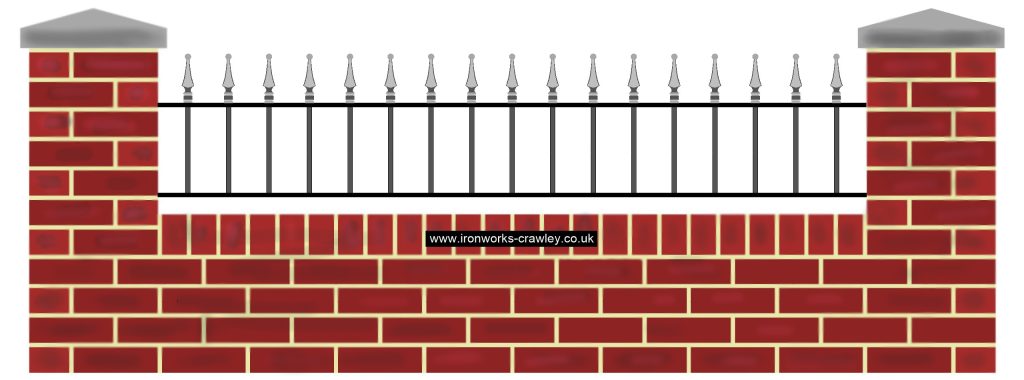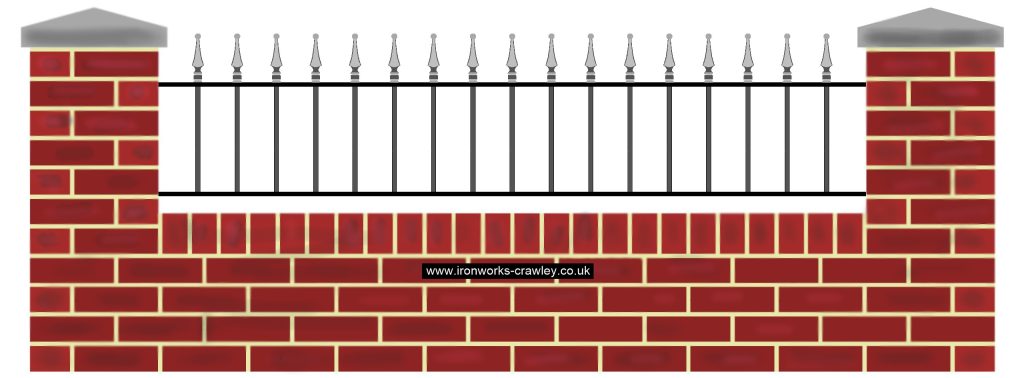A help page to hopefully answers a few common questions on wall railings.
How tall should it be.
A common ask question is how high should I have the railings in relation to the top of the wall. This kind of depends on the type of brick pier cap you have. If you have a soldier course as a pier cap then the railing heads should be no higher than the top. But they obviously can be lower and its all down to personal choice.



The examples drawn here have a stone type cap. The first drawing is under the pier cap. The middle set above the wall but under the top of the pier cap, and the final drawing with rail heads set level with the top of the pier cap.
The railing head choice has an effect on the overall size. Rail heads vary in height depending on design. but if you give us the overall size then the height of the ladder part of the railing can be adjusted in height to suit. Most of the railing heads made to suit 12mm bar are around the 130mm tall, and those for 16mm around 160mm tall.
Do i need a gap under the railing
The railing should have clearance from the wall. This allows air to get under the railing and stop the salt in the bricks from being in constant contact with the bottom rail. I usually suggest a gap of 40mm clearance. Funny enough its just about the right size to get one of the small radiator style rollers underneath. To be able to paint the bottom bar should the need arise
Does it need a centre support
That really depends on the length of the railing .Up to around 2000mm long its usually fine, over this length it can be worth considering. A light weight railing is going to have far more whip than a heavier one. A centre support is required over 3000mm long. This can be in the form of a bracket. that bolts to the wall. It may be possible to take the form of a spigot drilled into the wall, achieved by extending one of the upright bars downwards.